#blaine morton answers
Explore tagged Tumblr posts
Text
MEET THE PRESS
August 3, 1969
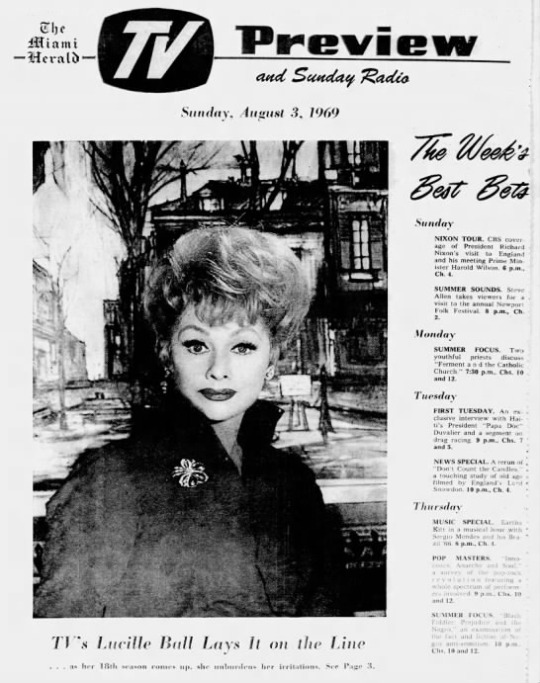
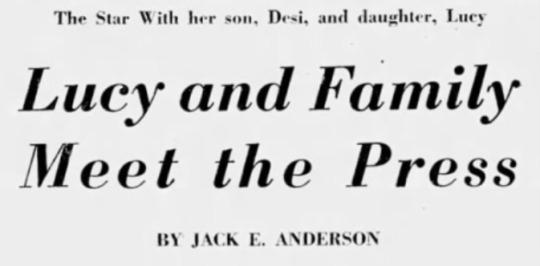
You are clued into the frank and tough talk to come by the way Lucille Ball swipes away with her handkerchief at the flies threatening the hors d’oeuvres The kerchief almost snaps like a wet towel.
The scene is the pool patio of her home on Beverly Hills’ Roxbury Drive and a cocktail party is in progress for visiting television editors.
Lucy has just emerged from the main house. She wears a powder blue double-breasted slack suit and saucer-sized sun glasses. In the blazing sun her orange hair has the color intensity of hot coals.
She has counted heads. Husband-producer Gary Morton is there. So are Desi Arnaz IV her son, and Lucy her daughter. And her TV side-kick Gale Gordon with his wife. Plus a half-dozen of her staff and CBS emissaries. There have been introductions all round to the newspaper types. It is time, she announces, to talk and she waves everybody into the big and comfortable pool house. A table has been positioned so that she can sit there presiding as she used to do at the stockholders’ meetings of the old Desilu Studios.
Almost immediately some wag fields her the question: “Lucy do you run the show?” She flashes him that big innocent TV look of hers. A staff member jumps up “Let’s all answer that one for her” There is a resounding “YES” from family-and-cast. Everybody laughs uproariously.
Very few questions are required to prime the pump. Lucy, it seems, has some matters of personal irritation on her mind and as far as she is concerned they come tumbling out without any prodding from her would-be interrogators.
First of all, she asks rhetorically, what’s all this business about whether she would retire? “I never said I wanted to quit or retire. There was a time when I was willing to quit but nobody asked me. Now I’ve set a date when I’ll retire”
A lot of ears perk up Somebody asks slyly — when? She’s waiting for that. Her answer is smilingly emphatic: “When I drop dead in my tracks.”
She turns then without anybody’s questioning to the matter of her longevity in television. This is her 18th year on the tube and it used to be talked about that she traded her popularity to CBS in return for its buying other shows produced by her company. This evokes an almost visible jet of steam out of the top of her carrot locks. “I never at any time sold any of the 20 shows our company produced on the basis of my returning each season. I’ve said that literally hundreds of times and nobody believed it.”
She went on to make it clear that she also dislikes the “big business” image which has adhered to her over the years. “I never like to talk about big money. I make my deal and that’s all. It’s been mostly a matter of legal procedures.”

As the star wades into these fiscal subjects your eye roams over the assemblage. Young Desi in tennis togs impassively studies the smoke curling up from a cigarette. Young Lucy clutches her hands around her knees and stares intently at her mother. Husband Gary sitting on a ledge at the back of the room swings his legs and smiles.
There has been no mention of Desi the elder the former husband Lucy’s co-performer and co-founder of Desilu Studios (now sold). Earlier this writer had chatted briefly with young Desi. He said he saw his father off and on and spends his summers as a rule at the father’s beach home at Delmar, south of Los Angeles.
The youngster asked if I knew his grandfather Dr. Desiderio Arnaz who lives in Coral Gables. (1)
But back to Lucy She’s telling us how many years it took to realize that as Lucille Ball she had attained V.I.P. status.
She reviews the years she spent trying to make it in show business, first on the stage, then as a model, and finally in the movies. Much of the time she says she stagnated. Until television came along.
“I never had any sense of importance. I was very pliable always willing to do what I was told It wasn’t until one day I saw in print somewhere some actress described as a ‘Lucille Ball type’ that I knew suddenly I was somebody and a part of the business.”
From there on the interview jumps from subject to subject.
I ask her whatever happened to the project Dean Martin’s producer Greg Garrison had for starring Martin, her, and Jackie Gleason in a revival of the musical “Guys and Dolls.” (2)
“I never said I would do it. Garrison kept publicizing it, but he never cleared it with me. I do still want to do ‘Diamond Jim’ with Jackie It’s just a matter of finding the time.” (3)
A lady editor wants to know how Lucy keeps her sinuous figure.
“I don’t particularly like food. I’m not very fond of meat, for example, except in the morning.”
Which brings a snort of disgust from her husband. “Can you imagine what it’s like to have to watch her eating corned beef or hamburger at 6 o’clock in the morning?”
The questions now go to the children. What are Desi’s plans? Does he want to make acting his future? “I want to be an actor for awhile but I don’t think I ever want to be one certain thing.”
Young Lucy, who, at 18, is two years older than her brother, is more sure of her future “I’ll go to college for awhile but I like acting. I’ll stay at it if I can.”
Would she somebody asks join the campus protest and carry a sign? Only if it says ‘wet paint’ quips she.
Lucy now introduces her cast veteran, Gale Gordon. He pays her extravagant compliments and talks a bit about his radio and early television days.
The interview’s late arrival is venerable George Marshall, who is now the show’s director. Lucy introduces him as “our sexy senior citizen.” Marshall goes back to the dawn of movies and is filled with fascinating anecdotes about his years in the business. (4)
The conversation turns to TV’s talk shows. Somebody suggests to Lucy that she would be a highly likely guest for Merv Griffin’s new show starting on CBS Aug 18. (5)
Lucy's answer comes lancing back “That’s what you think. I don’t like him.” Which rocks everybody back. Why not? “Because he doesn’t know how to interview. He’s rude to his guests and he monopolizes the conversation.”
She doesn’t wait for the next question. “I’m wild about Dick Cavett (on ABC) I think he’s great And I told Bill Paley (board chairman of CBS) he should have him on our network. But Bill said ABC got him first and we’re out of luck.” (6)
Everybody is suddenly distracted by three teen-age girl fans leaning over a fence way up front. They’re begging to be allowed on the grounds. Morton jogs forward to shoo them away.
“This happens all the time,” says Lucy. “My God they used to picnic right in front of the house until our police department stopped them. Jimmy Stewart, who lives up the street, finally told me how to keep them away. Turn on the lawn sprinklers.”
Morton returns and takes everybody for a tour of their luxurious but very lived-in home. Lucy tells us a funny story about how Jack and Mary Benny had once been their next door neighbors sold their home then asked her to try to mediate a re-sale of the place back to them. Then we take our leave.
# # # FOOTNOTES FROM THE FUTURE

(1) Dr. Desiderio Alberto Arnaz y Alberni II (1894-1973) was a Cuban politician and the father of Desi Arnaz. He graduated from the Southern College of Pharmacy in 1913 in Atlanta, Georgia. Desiderio Arnaz II was the youngest mayor of Santiago de Cuba (1923–32). When president Machado was overthrown in August 1933, Arnaz was arrested and jailed. Six months later, he was allowed to go into exile. He married Dolores "Lolita" de Acha y de Socias in 1916 and had one son, Desiderio "Desi" Arnaz III. He later had a daughter, Connie Arnaz (1932), with Anne M. Wilson, whom he married in 1941.

(2) Guys & Dolls was a 1950 stage musical by Frank Loesser, based on the stories by Damon Runyon starring Robert Alda, who appeared on several episodes of “The Lucy Show” and “Here’s Lucy”. It was filmed by MGM in 1955. During that time, Lucy and Desi were also under contract to MGM, so they prevailed upon “I Love Lucy” to insert a clip from the film into “Lucy and the Dummy” (ILL S5;E3). After its initial airing on October 17, 1955, the clip was removed from the film print, and for legal reasons, has never been restored. It is unclear whether Garrison’s project with Martin, Ball, and Gleason would have been a film revival, or a stage production. Whatever it was to be, Lucy wanted to have no part of it, perhaps remembering the rigors of performing on stage in Wildcat (1960). During her film career, Ball was in two films based on Damon Runyon material, The Big Street (1942), a film she claimed as her favorite, and Sorrowful Jones (1949). She also did a radio version of Runyon’s “Tight Shoes” in 1942. Ball and Gleason would have been cast as Miss Adelaide and Nathan Detroit, while Dean Martin would have played Sky Masterson, the romantic lead. Those roles were played by Vivian Blaine, Frank Sinatra, and Marlon Brando in the film. Obviously, the project never came to be.
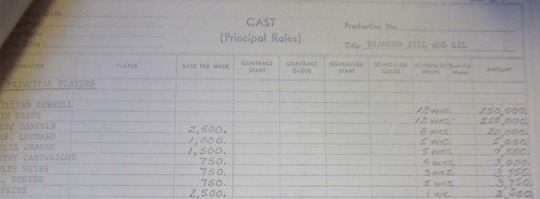
(3) “Diamond Jim” was a project that Lucy dearly wanted to make with Gleason. He would play Diamond Jim Brady (1856-1917) to her Lillian Russell. Ball even went so far as to have a script written to further grab Gleason’s attention. Despite their best intentions, Gleason and Ball’s schedules never allowed for enough time to make the film.
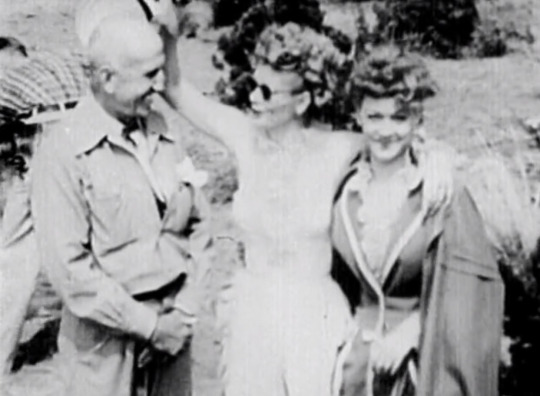
(4) George Marshall (1891-1975) had directed Lucille Ball in Valley of the Sun (1942) and Fancy Pants (1950). He was considered an expert at location shooting, so when “Here’s Lucy” wanted to spend the first four episodes of Season 2 on location, Marshall was hired as director. He stayed on for seven more episodes of the sitcom before bowing out.
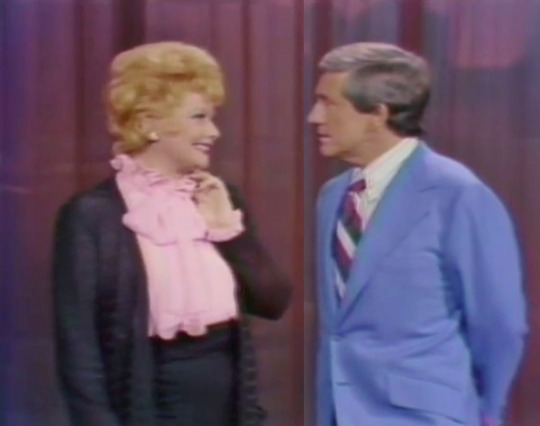
(5) Despite Lucille Ball’s rather harsh public assessment of Merv Griffin (1925-2007) at this August 1969 press party, Ball appeared on “The Merv Griffin Show” four times between 1971 and 1980! During her first appearance, the aforementioned George Marshall was also a guest!

(6) Lucille did seem to enjoy doing the talking to Dick Cavett, although she only got to do his chat show once, on March 7, 1974, in conjunction with her press tour for Mame.
#Lucille Ball#1969#Press Party#Dick Cavett#Merv Griffin#TV#Here's Lucy#Gary Morton#Lucie Arnaz#Desi Arnaz Jr.#Guys and Dolls#George Marshall#Jack E. Anderson
4 notes
·
View notes
Text

tag drop for blaine morton
#ch:blaine morton#ch:blaine morton muse#c:blaine morton#permanent starter call:blaine morton#starter call:blaine morton#open starter:blaine morton#blaine morton likes#blaine morton loves#blaine morton answers#blaine morton headcanons#this is the que
0 notes
Text

tag drop for blaine morton
#ch:blaine morton#ch:blaine morton muse#c:blaine morton#permanent starter call:blaine morton#starter call:blaine morton#open starter:blaine morton#blaine morton likes#blaine morton headcanons#blaine morton answers#this is the que
0 notes
Video
youtube
Always Open: Ep. 15 - We Need Therapy | Rooster Teeth
“Join Barbara Dunkelman, Blaine Gibson, Mariel Salcedo, and special guest Kati Morton as they answer your questions about mental illness, and discuss experiences coping with their own mental well-being.”
I wouldn’t be surprised if this one is already on tumblr but just in case, I think this episode could be very helpful for a lot of people. There are a few things mentioned in this episode that I previously would not have recognized as a problem (at least one of which has been from a doctor).
Kati Morton's Twitter - @KatiMorton
Kati Morton's Channel - Kati Morton - YouTube
Intuitive Eating Workbook - http://bit.ly/2jBkLVz
7 Cups of Tea - https://www.7cups.com
Suicide Prevention Hotline - 1-800-273-8255
http://katimorton.com, http://therapistfinder.com
2 notes
·
View notes
Text
Embattled London Art Market Has Become a Testing Ground for New Gallery Models

Frieze London, 2016. Photo by Benjamin Westoby for Artsy.
“How’s London?” an American gallerist asked me over the summer. He was preparing for his umpteenth Frieze and I could hear he wanted good news. I hesitated to answer that London was more depressed that I’d ever known it in my 12 years in the U.K. From across the pond, the issue of Brexit can seem parochial—particularly in light of persistent political turmoil in the U.S.—but its impact could be felt worldwide.
Yet if you look at the London art world hard enough there are signs that the primary market has yet to lose its oomph. Frieze Week will usher in a fresh crop of new spaces to the capital, set up by galleries either moving in or consolidating their London presence. There’s a genuine feeling among the contemporary art crowd that people are rallying together to protest what can feel like madness all around. Brexiteers might accuse them of being a “liberal elite” preaching to the converted, but Londoners won’t let go.
At a national level, outside the art world’s bubble, the picture is grim. The delusion and arrogance of the British officials in charge of negotiating with the EU would be comical if they weren’t seriously risking the prospects of an entire nation. Hate crimes have increased by over 200 percent since the referendum. When we thought the tabloids couldn’t possibly get worse, they are now overtly “policing” the democratic process, labeling, for instance, High Court judges “Enemies of the People” when they ruled that only Parliament was able to trigger Article 50. European nationals like myself are getting used to being asked routinely if they’re going to get kicked out.
Banks decamping to the EU could seriously weaken London’s position as a financial center, a position key to its art-world stature. And as investors wait for developments in the Brexit negotiations to back the pound, the currency has fallen to an eight-year low against the euro. A weak British pound might be good for buyers of art, real estate, and other commodities from overseas, but for Londoners the city is still eye-wateringly expensive. Artists, curators, and their ilk are starting to wonder if it’s all really worth it—and are increasingly considering Brussels, Lisbon, and Prague as viable alternatives.
Brexit cannot be blamed for the string of recent gallery closures, among them Laura Bartlett and Wilkinson. But it certainly doesn’t breed confidence, and its effects on the art economy, which remains fragile at the lower end of the market, are still largely unknown. Yet London, ever multicultural and pragmatic, is clearly determined to fight the nationalist tendencies gripping much of the country and to maintain its prime spot on the global business map.
Last April, Frieze entered the political fray. Hoping to assuage its exhibitors’ concerns over the U.K. exiting the EU, fair management sent a set of recommendations to Britain’s Department for Digital, Culture, Media & Sport and to the Creative Industries Federation. Recommendations included the maintenance of the Temporary Admission policy (which allows artworks imported on a temporary basis to be tax-exempt) and of the freedom of movement for people, augmented, if needed, by “a specialist category providing artists and art workers fast-track entry for specific events.” Freedom of movement has been a particularly sore point in the Brexit talks, which have continued in Brussels this week. As the fair opens the doors of its 15th edition on October 4th, government reassurances on this or any other points are still a long way away.
Galleries aren’t waiting around to see what happens. The Berlin mainstay König Galerie opens a 3,750-square foot London space in a former Marylebone car park on Thursday; it’s perhaps the most highly anticipated event this season. The gallery-cum-shop, König Archiv & Souvenir, will feature artworks including Julian Rosefeldt’s filmic investigation of Germany’s past Deep Gold (2013–14), as well as books, “wearables,” and merch. According to London director Zhoe Granger, formerly of Arcadia Missa, the gallery saw Brexit as a potential opportunity.
“Despite being adverse to the decision politically, I feel that Brexit is propelling the art world forward with a new sense of anticipation, maybe giving it the kick that it needed in the U.K.,” she says. “Any time of political unrest always breeds powerful emotion and therefore interesting artwork.”

Image by @spruethmagers via Instagram.
Sprüth Magers’s London director Andreas Gegner says he’s also certain that Brexit won’t throw the London art world off pace. “London has worked its way up to be on a par with New York over the past decade, becoming the primary hub for the art market this side of the Atlantic,” he says. “The reasons for London’s rise were varied and lay beyond the benefits of its EU membership. Brexit won’t put an end to it.”
The German gallery has just strengthened its position in the capital, refurbishing its Grafton Street home. The elegant 18th-century mansion has doubled its exhibition space, which now spreads over two floors, and boasts another new, six-meter-high gallery in the basement. The choice of YBA Gary Hume (who left his alma mater White Cube a couple of years ago) for the opening show is meant as further proof of the gallery’s commitment to British culture.
Several homegrown galleries, big and small, are also making strides, and London’s gallery map is shifting. While Mayfair and the East End remain the two main hubs, dealers appear increasingly keen to explore other areas. The idea that you had to be within one mile of Claridge’s to do serious business is beginning to lose sway.
Project Native Informant founder Stephan Tanbin Sastrawidjaja has swapped his former garage behind London’s iconic luxury hotel for a recently converted high-rise in the City, an area which until now has had virtually no galleries. “Audiences in London are adventurous and willing to come to new destinations if they feel a strong incentive,” says the dealer, who is currently showing new work by rising star Juliana Huxtable. Dublin gallery Mother’s Tankstation will be joining PNI next week, opening a yearlong project space in the same building with a solo show by Yuri Pattison.

Installation view of Juliana Huxtable at Project Native Informant. Courtesy of PNI.
Artist Ed Fornieles, who has been strongly associated with the “post-internet” generation, has just resettled in the capital after a four-year stint abroad. Brexit and the subsequent marginal dip in Central London prices, Fornieles says, allowed him to secure a live/work space in Soho, which he intends to turn it into a “meeting place,” renewing with London’s tradition of artist-run-spaces.The Studio, as he’s dubbed the space, will officially open during Frieze Week with a two-day summit bringing together artists and Live Action Role Play practitioners.
“London has an intensity, an overflow of human beings, so it’s very useful and nurturing for the production of works,” he says.
Meanwhile, East End torchbearer Herald St has inaugurated a new space in Bloomsbury, a stone’s throw from the British Museum, with an exhibition by sculptor Michael Dean. The Sunday Painter has left the South London district of Peckham—something most of us would have thought unthinkable—and graduated to Vauxhall, joining Cabinet, Corvi-Mora, non-profit space Gasworks, and Damien Hirst’s Newport Street Gallery.
This spurt of new openings shouldn’t overshadow the acute and well-identified problems many galleries are facing—issues that predate Brexit and afflict the art world internationally. Yet it suggests a spirit of experimentation particularly welcome in these dark times, a spirit to which established operations are also contributing. Both The Approach and Blain|Southern are launching project spaces: The Approach Annex will open with a display of works by Lisa Oppenheim and John Stezaker, while art critic Tom Morton leads Blain|Southern’s year-long curatorial experiment, Lodger.
This might be a case of adapt or die. Following the recent spate of gallery closures in London and New York, galleries are becoming increasingly aware that, in such a fiercely competitive environment, sticking to what they know is no longer enough. Head-scratching abounds about new gallery models, particularly those which could bypass crippling real estate costs.
The team behind the new venture Cromwell Place believes it has cracked that nut. Located in five period townhouses in the heart of London’s Museum quarter in South Kensington, the art hub will function as a WeWork-style members’ club when it opens in autumn 2019. Membership, which entails a £4,000 ($5,391) initiation fee will give galleries access to art spaces, including 25 offices and 16 exhibition halls of various sizes, charged on a pay-per-use basis. Services such as installation, shipping, and the marketing of members’ shows, will be pooled and managed on site.

Cromwell Palace interior Club Room. Photo by Dan Weill. Courtesy of Dan Weill.
The concept of a purpose-built gallery hub is not new. H Queen’s, which will soon host David Zwirner and Hauser & Wirth in Hong Kong, is a key example. But Cromwell Place, which cost £20 million ($26.7 million) to build, claims to be the first art business to offer flexible work space to the art world. It targets both out-of-town galleries looking to pop up in the capital, small and mid-size operations looking for alternatives to bricks-and-mortar, as well as fledgling businesses.
“The world is changing,” says Cromwell Place’s creative director, John Martin. “People don’t want huge financial burdens on their shoulders; they want to be nimble.”
The model encourages galleries to function like dealerships, staging shows as and when they need it. It also puts pressure on art fairs like Art Basel, which still insist that exhibitors have a permanent exhibition space. Martin says that this requirement was reasonable to expect of galleries 15 or 20 years ago.
“Now I don’t think it’s defensible,” he says. “I think it will change.”
The list of Cromwell Place galleries is yet to be announced, and it remains to be seen whether collectors will buy into the idea of their galleries becoming ad hoc showrooms. But if successful, Cromwell Place’s model could easily be scaled to other major and emerging art capitals and could bring significant changes to the nature of the business and the way art is consumed.
So, how’s London? It’s embattled, yes, but it’s not giving up. Londoners’ profoundly global outlook, can-do attitude, and ingrained business knowhow continue to thrive. I’ll never call Brexit an opportunity. It’s a fiasco brought in by petty political calculations, lies, and fear, and an insult to the 3.6 million European nationals that have chosen to call Britain home. But it’s forced all of us to choose our camp, and Londoners’ position is clear. Mayor Sadiq Khan’s post-Brexit campaign couldn’t have been more on point: #londonisopen.
—Coline Milliard
from Artsy News
0 notes
Text
Always Open (2016): We Need Therapy
Join Barbara Dunkelman, Blaine Gibson, Mariel Salcedo, and special guest Kati Morton as they answer your questions about mental illness, and discuss experiences coping with their own mental well-being. This episode is sponsored by 1-800-Flowers (http://bit.ly/2jwIWEx) and Squarespace (http://bit.ly/2ktKvz4) Kati Morton's Twitter - @KatiMorton, Kati Morton's Channel - Kati Morton - YouTube, Intuitive Eating Workbook - http://bit.ly/2jBkLVz, 7 Cups of Tea - https://www.7cups.com, Suicide Prevention Hotline - 1-800-273-8255, katimorton.com, therapistfinder.com from TheTVDB.com Today's New Episodes http://ift.tt/2jEyxXg via IFTTT
0 notes